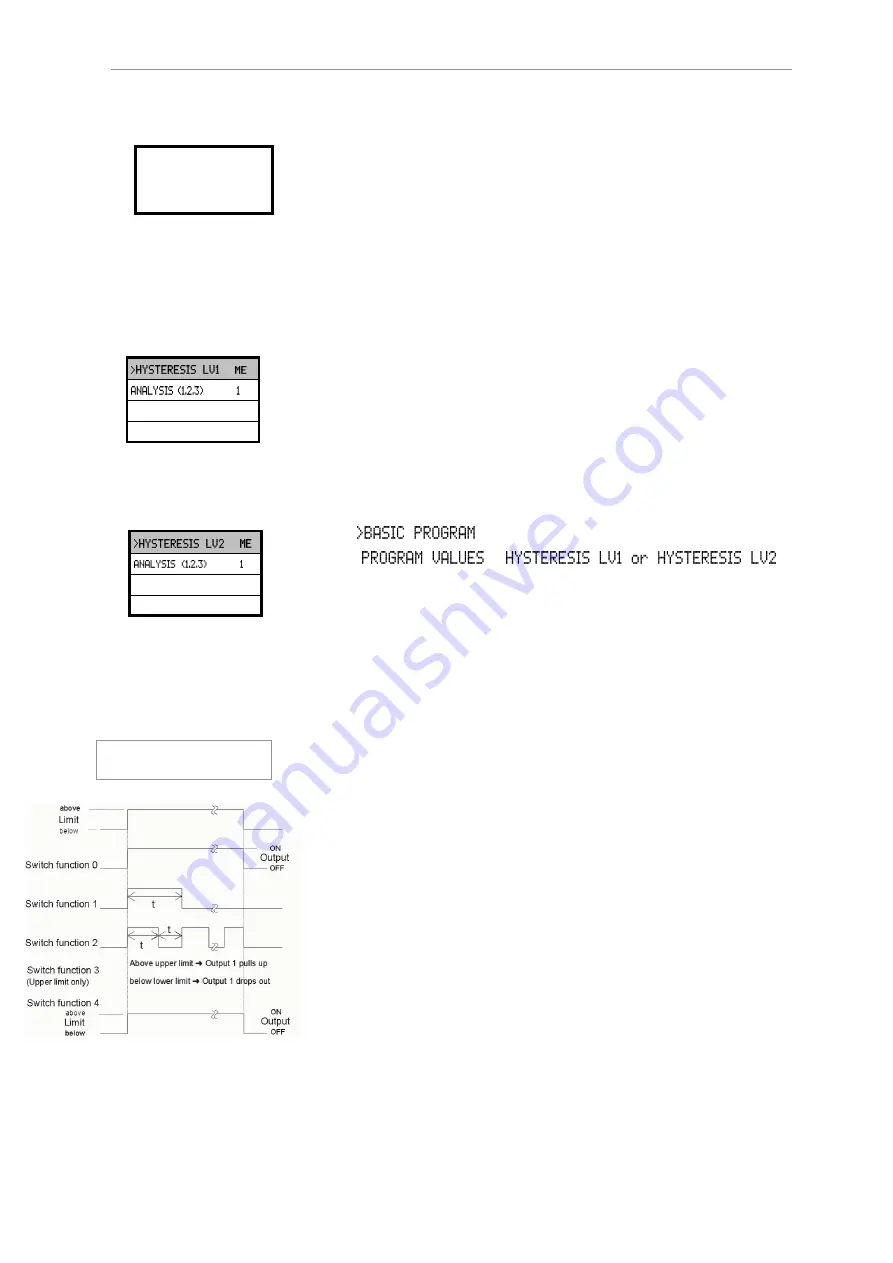
Entering further basic program data
27
Hysteresis
The respective limit value output only switches after the first, second
or third bad analysis (suppression of the first or the second measured
value). This increases the reliability of the analysis evaluation, e.g.
after the measuring point has been switched over or if the sampling
line has not been flushed sufficiently. The hystereses of the two
outputs LV1 and LV2 can be set independently of each other.
With a hysteresis of "2", the next analysis is immediately carried out
when the limit value of this analysis has been exceeded for the first
time. The respective output is only switched after the limit value of
this analysis has been exceeded for a second time. With a hysteresis
of "3", the respective output only switches when the limit value of this
analysis has been exceeded for a third time. This setting is only
reactivated once the value has fallen below the limit value! The
behaviour of switch function 4 is inverse.
With switch function 5 hysteresis occurs if limit value LV1 is
exceeded and LV2 is not achieved.
(The basic setting for LV1 and LV2 is 1)
In
, select
=>
=>
Enter the number of analyses
Press "ENTER" to confirm the entry
Switch functions of the limit value outputs
LV1 and LV2
Switch function 0, duration
If the limit value LV1 or LV2 has been exceeded, the output relay LV1
or LV2 reacts. If the measured value falls below the limit value LV1
or LV2 without locking, the relevant relay drops out again.
Switch function 1, impulse
If the measured value exceeds the limit value LV1 or LV2, the
relevant output switches for a settable time (t).
The respective output always remains switched for the set time,
irrespective of how long the limit value has been exceeded. A new
impulse is only possible once the value has fallen below the limit
value!
Switch function 2, interval
If the limit value has been exceeded, the respective output switches
at intervals with the settable time (t) = impulse or interval. The
switching on time and the interval are the same.
Suppression of
bad analyses
▼▲
▼▲
Schematic representation
of switch functions
















































